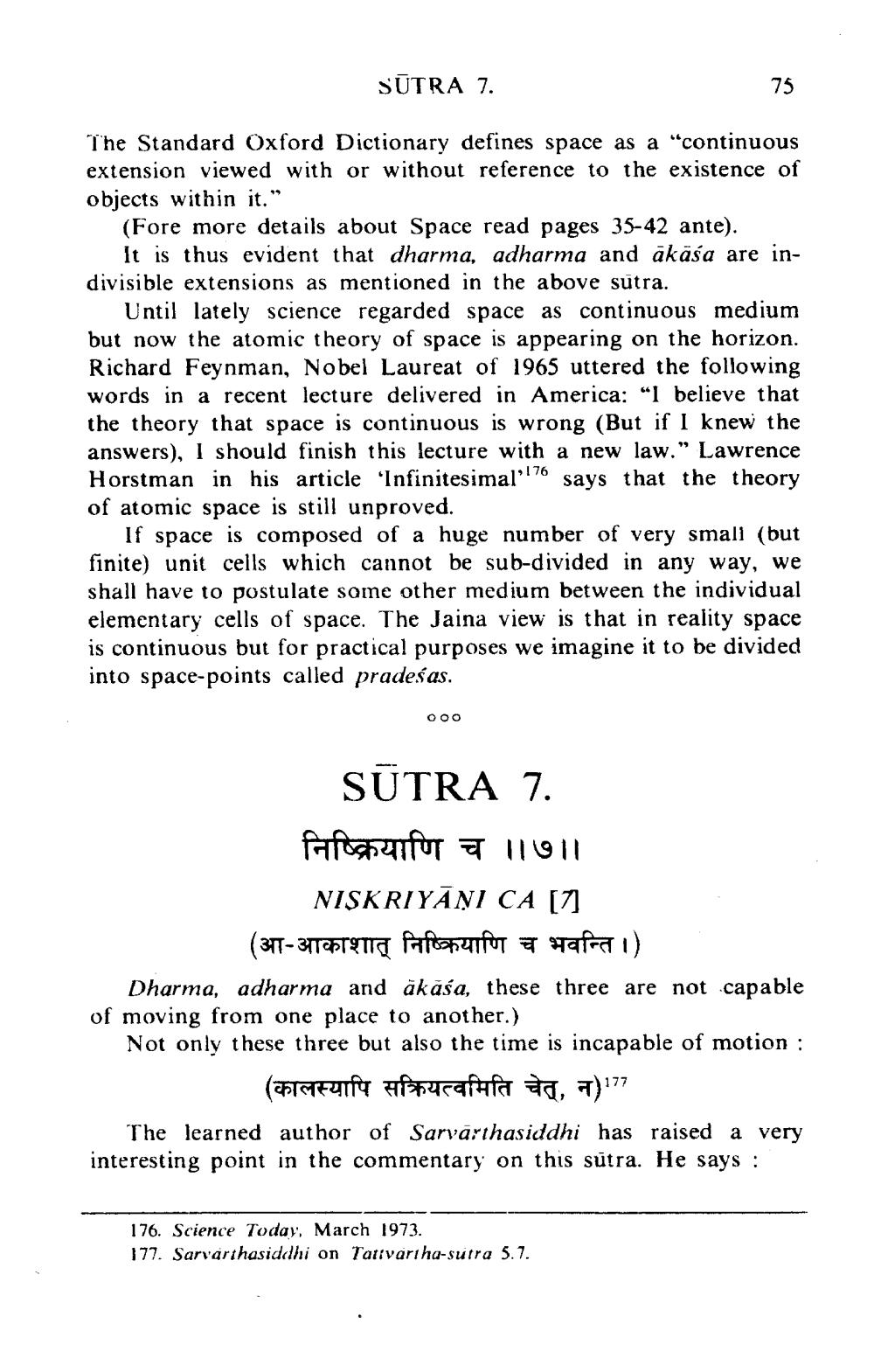________________
SŪTRA 7.
The Standard Oxford Dictionary defines space as a "continuous extension viewed with or without reference to the existence of objects within it."
99
(Fore more details about Space read pages 35-42 ante).
It is thus evident that dharma, adharma and ākāśa are indivisible extensions as mentioned in the above sutra.
Until lately science regarded space as continuous medium but now the atomic theory of space is appearing on the horizon. Richard Feynman, Nobel Laureat of 1965 uttered the following words in a recent lecture delivered in America: "I believe that the theory that space is continuous is wrong (But if I knew the answers), I should finish this lecture with a new law." Lawrence Horstman in his article 'Infinitesimal'! says that the theory of atomic space is still unproved.
,176
If space is composed of a huge number of very small (but finite) unit cells which cannot be sub-divided in any way, we shall have to postulate some other medium between the individual elementary cells of space. The Jaina view is that in reality space is continuous but for practical purposes we imagine it to be divided into space-points called pradeśas.
000
75
SUTRA 7. Pafostenfor a 11911
NISKRIYĀNI CA [7]
( आ- आकाशात् निष्क्रियाणि च भवन्ति । )
Dharma, adharma and ākāśa, these three are not capable of moving from one place to another.)
Not only these three but also the time is incapable of motion :
(कालस्यापि सक्रियत्वमिति चेत्, न ) 177
The learned author of Sarvarthasiddhi has raised a very interesting point in the commentary on this sūtra. He says:
176. Science Today, March 1973.
177. Sarvarthasiddhi on Tattvartha-sutra 5.7.




